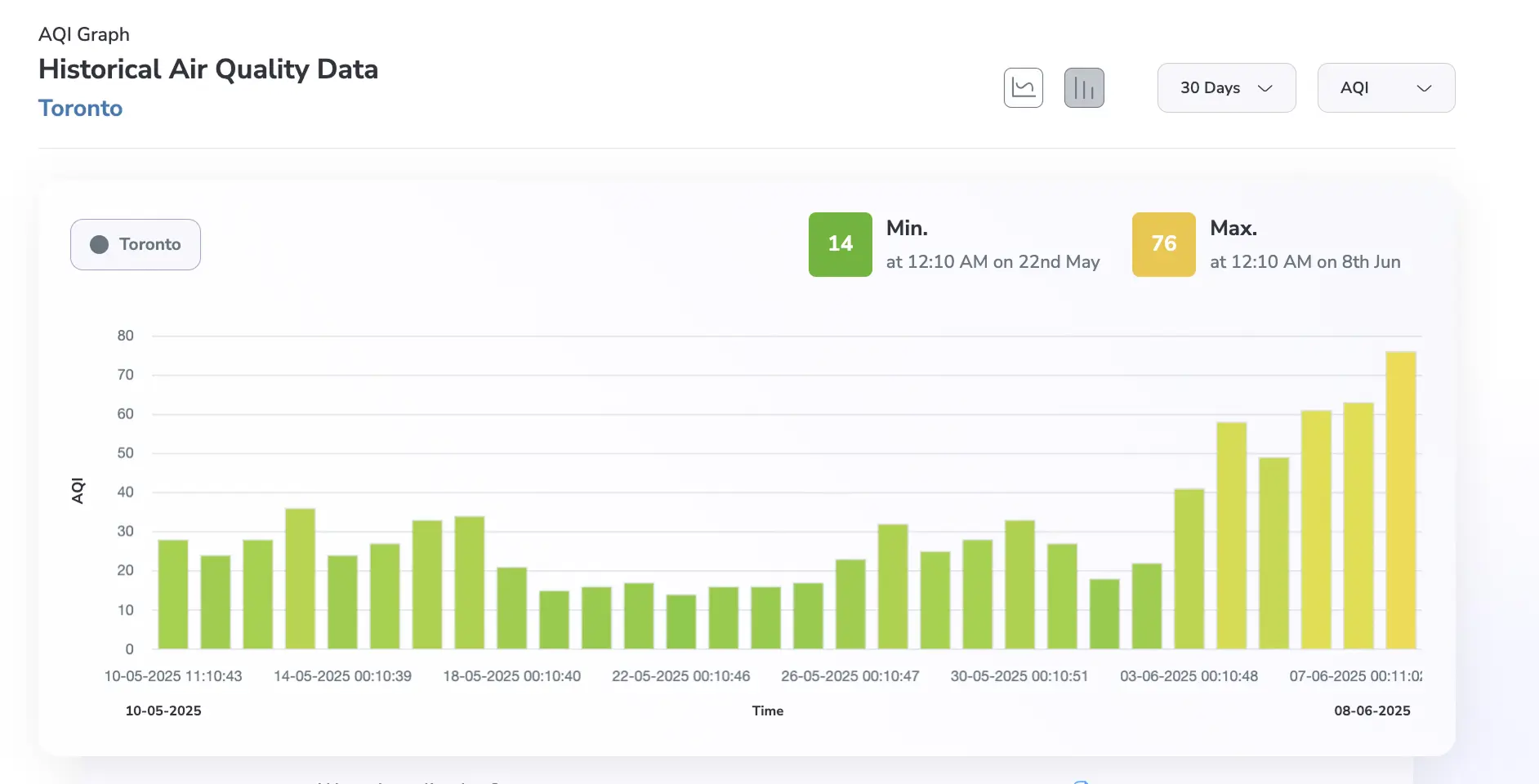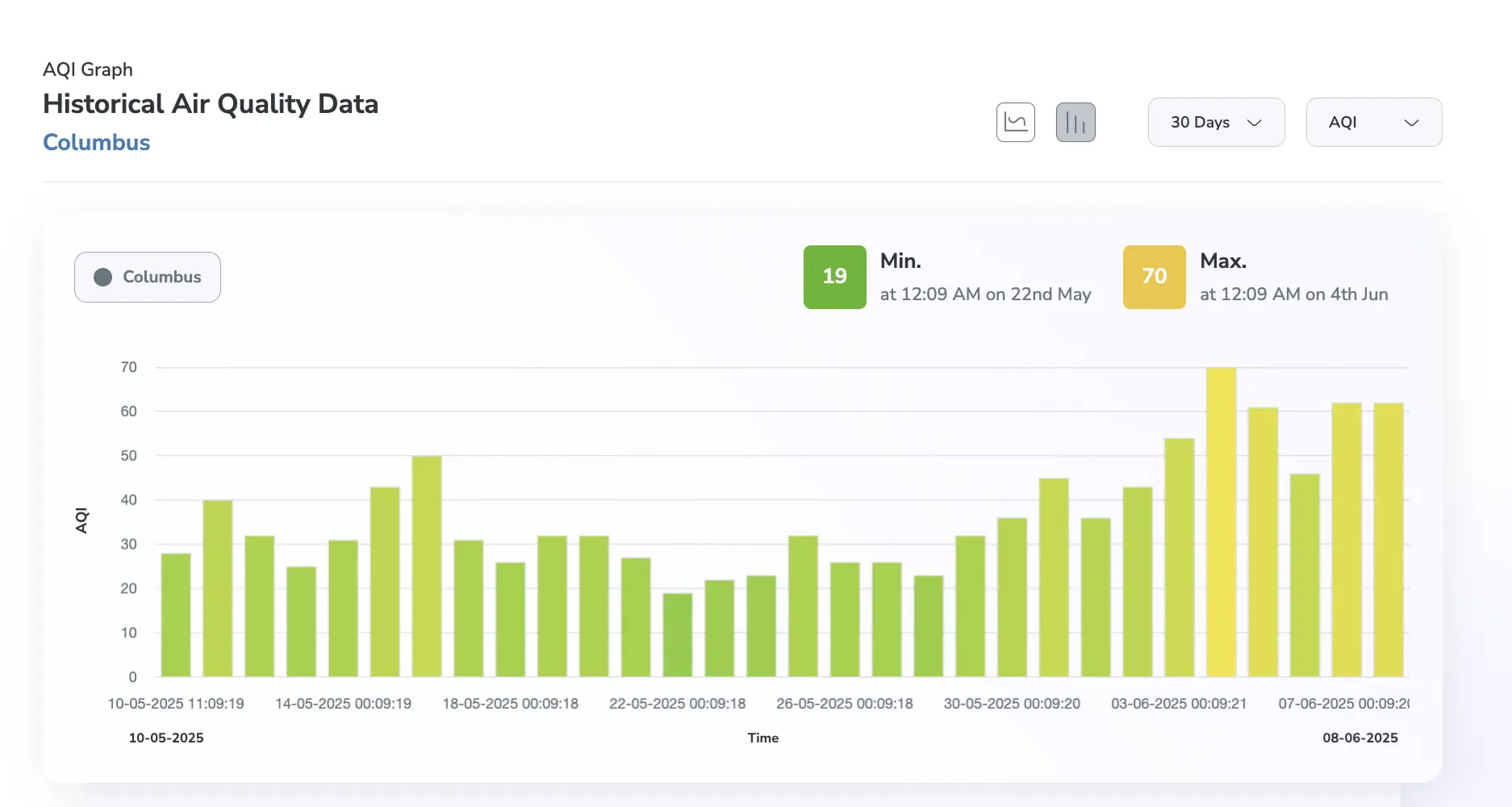The skies above North America are glowing orange—and it’s not the sunset. It is due to the wildfire smoke in Canada 2025.
As of June 9, 2025, Canada is in the grip of one of its most severe wildfire seasons in recent history. Sending thick plumes of smoke across the continent and even reaching Europe. More than 200 wildfires are burning across provinces like Manitoba and Saskatchewan. As a result, forcing thousands to evacuate, choking major cities with hazardous air, and turning day into dusk with eerie.
This is not just a regional crisis—it’s a transcontinental air quality emergency.
Explore how the smoke is affecting air quality in nearby cities. And most importantly, know how to protect yourself from the dangerous health effects of wildfire smoke.
Current Conditions of Wildfire Smoke in Canada 2025:
The 2025 Canadian wildfire season has marked by intense fire activity. As with over 200 wildfires reported across the country as of early June. Key data points include:

Manitoba:
The Bird River Fire has burned approximately 198,000 hectares and remains out of control. It is leading to evacuations in Bissett, Nopiming Provincial Park. And Flin Flon, with over 17,000 residents, including 5,000 from Flin Flon, displaced.
Saskatchewan:
The Lower Fishing Lake Fire covers 407,956 hectares and is not contained. As with evacuations from Lower Fishing Lake, Piprell Lake, East Trout Lake, Little Bear Lake, and Whiteswan/Whelan Bay. Another significant fire west of La Ronge, at 83,630 hectares, is not contained. This led to evacuations from Hall Lake, Nemeiben Lake, Sucker River, Wadin Bay, Sikachu, Clam Crossing, La Ronge and other areas.
- Canada is at National Preparedness Level 5, indicating full commitment of national resources and extreme demand for interagency resources through the Canadian Interagency Forest Fire Center (CIFFC), with international resources mobilized, including US support to Alberta, Saskatchewan, and Manitoba.
- Dry and windy conditions are expected to persist, with significant rainfall not anticipated until later in June, suggesting the fires may continue for several weeks.
How Wildfire Smoke in Canada 2025 is Impacting the Air Quality?
The smoke from these wildfires has had far-reaching effects on air quality, with detailed impacts observed in Canada, the US, and Europe, using data exclusively from aqi.in:
Toronto, Canada:

Between June 3rd and June 8th, 2025, Toronto’s air quality showed a steady upward trend. The AQI rose from a low of 36 (Good) at 6:10 AM on June 3rd to a peak of 78 (Moderate) at the same time on June 8th. While the values remained within the ‘Moderate’ range (51–100), the consistent increase over the 6-day period points to a gradual deterioration in air quality. This rise coincides with active wildfires in nearby provinces like Manitoba and Saskatchewan, suggesting that smoke and airborne particles may have contributed to the worsening air quality.
Detroit, USA:

Between June 3rd and June 6th, 2025, Detroit experienced a significant rise in air pollution levels. According to the data, the AQI (Air Quality Index) increased from 37 (Good) at 12:10 AM on June 3rd to 131 (Unhealthy for Sensitive Groups) at 12:11 PM on June 6th. This 94-point jump in just three days suggests a sharp deterioration in air quality. The likely cause is smoke from ongoing wildfires in Canada’s Manitoba and Saskatchewan regions, which have been contributing to cross-border air pollution.
Columbus, Ohio, USA:

Between June 3rd and June 8th, 2025, Columbus recorded moderate but fluctuating air quality levels, with the highest AQI reaching 72 on June 4th, and the lowest dropping to 44 at June 6th. While AQI levels remained within the ‘Moderate’ range (51–100) for most of the week, the brief spike to the upper end of this range reflects the possible influence of transboundary wildfire smoke from Canada, similar to what was observed in nearby regions like Detroit.
The smoke has also caused orange-red skies in many areas, particularly during sunsets, across the Eastern US and Europe. This phenomenon occurs because wildfire smoke contains particles that scatter sunlight, enhancing red and orange wavelengths while scattering blue light away from the line of sight, as widely reported in news outlets.
The Orange Sky Phenomenon Due to The Wildfire Smoke in Canada 2025:
The smoke from the wildfires has caused the sky to appear orange-red. Especially during sunsets, across the Eastern US and Europe. This occurs because wildfire smoke contains particles that scatter sunlight. It enhances red and orange wavelengths while scattering blue light away from the line of sight. This phenomenon has widely reported, with residents in affected areas noticing unusually colored skies. As where smoke made sunsets appear more orange-red than usual across the Eastern US.
Health Risks and Protective Measures for Residents Exposed to Wildfire Smoke in Canada 2025:
Wildfire smoke poses significant health risks, particularly to sensitive groups such as children, the elderly, and individuals with heart or lung conditions. Symptoms can include coughing, throat irritation, difficulty breathing, and exacerbation of existing health conditions.
Health Risks:
The smoke contains fine particulate matter (PM2.5). These can travel long distances and pose risks even in areas far from the fires. Winnipeg and Fort Smith reported “very high risk range” air quality on June 6, 2025, according to the Canadian government.
Protective Measures:
Health authorities recommend the following to protect residents:
- Stay Informed: Monitor air quality alerts and forecasts using tools like FireSmoke.ca or local government websites.
- Limit Outdoor Activities: Reduce time spent outdoors, especially during peak smoke times, and avoid strenuous activities, as advised by the National Weather Service for New York City on June 3, 2025.
- Employ air purifiers indoors or visit locations with filtered air, such as libraries or malls, as recommended by health authorities.
- Wear Masks: Use N95 masks when outdoors to reduce inhalation of particulate matter, especially in areas with high PM2.5 levels.
- Seal Homes: Keep windows and doors closed to prevent smoke from entering, as advised for Minnesota and bordering states.
- Hydration and Medication: Stay hydrated and keep necessary medications on hand, especially for those with respiratory conditions, to manage symptoms during smoke events.
Conclusion and Outlook
The wildfire smoke in Canada 2025 season is intense. Since, with over 200 fires still burning and significant impacts on air quality across North America and Europe. Residents in affected areas, such as Toronto and Ohio, should stay informed about air quality alerts. And also follow evacuation orders if necessary. The duration of the fires remains uncertain, but it seems likely they could persist for several weeks. Because it depends on rainfall and firefighting efforts. Continued monitoring, international cooperation, and adaptive measures are essential to mitigate the impacts of these devastating wildfires.